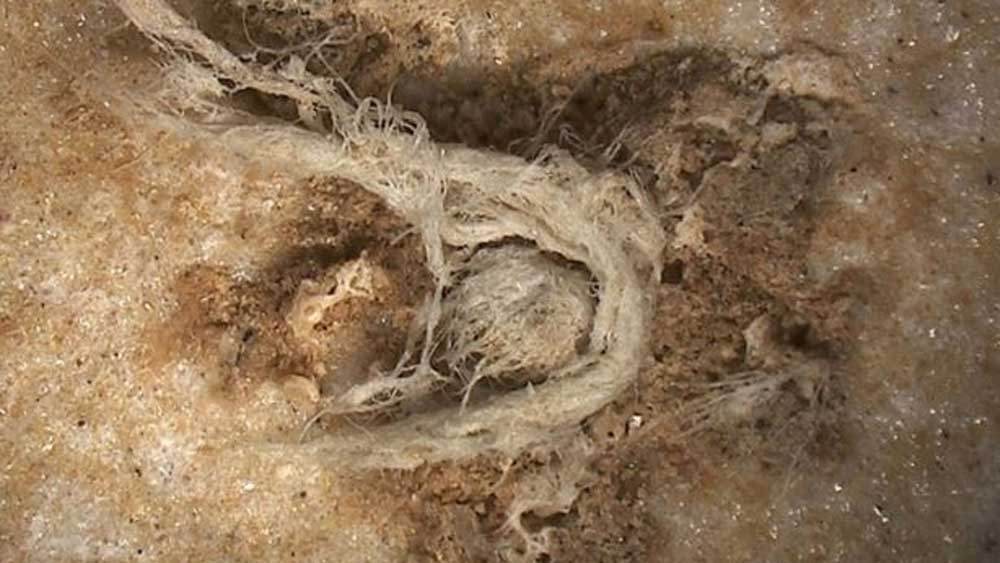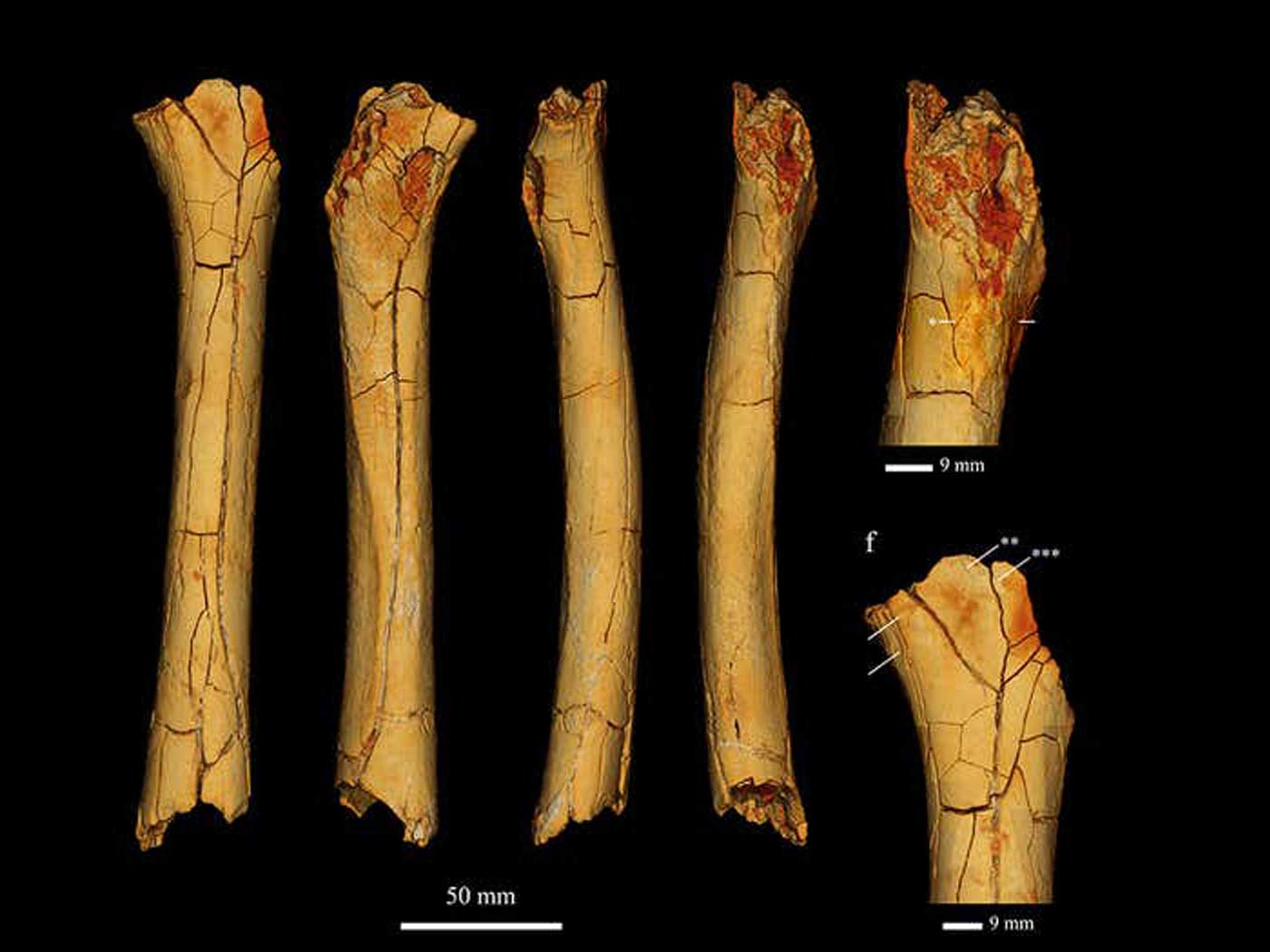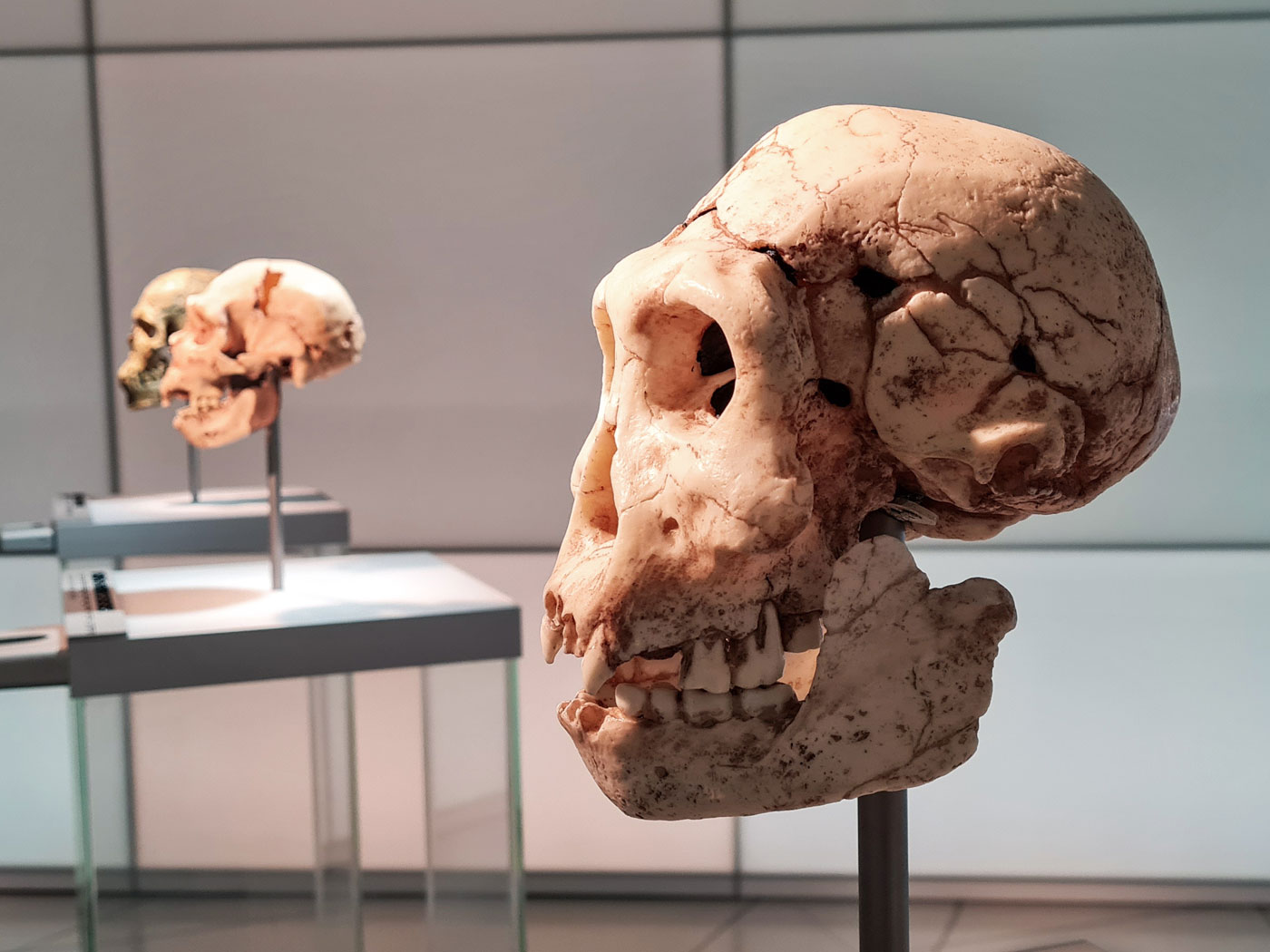A piece of string about 6 millimeters long is threatening standard evolutionary theory about the history of humanity.
The BBC reported that researchers from the United States, France, and Spain recently discovered a small piece of string at a Neanderthal site in France.1 The researchers say that the string is approximately 50,000 years old.
According to evolutionary theory, Neanderthals were a relatively recent ancestor of modern humans, but did not have nearly the cognitive abilities that we have today. However, this discovery casts doubt on that hypothesis.
The 3-ply string was evidently made from the inner bark of a tree, the researchers said. The portion found was 6.2mm long and 0.5mm wide, and was made from three fibers, each twisted carefully in an “S-twist,” and then twined together into a cord.
The ability to make this cord “implies that Neanderthals understood concepts like pairs, sets, and numbers.” The article further explains that if Neanderthals were capable of making materials made of twisted fibers, then that means they likely could make things such as “clothes, bags, nets and even boats.”
In addition, the use of the internal bark of trees “demonstrated that Neanderthals had a detailed ecological understanding of trees and how to transform them into entirely different functional substances.” On an even deeper level, it shows that Neanderthals understood math and possessed the ability to to track with “multiple, sequential operations simultaneously.”
In other words, they could perform tasks just like modern humans.
While this is astonishing to those who hold to the evolutionary mindset, it simply confirms what biblical creationists already know: humans have always been humans. Humans have always been able to think, reason, create, work, and communicate, just as they were made to do.
Genesis tells us that we did not evolve from a previous, less-developed ancestor. Instead, we were specially, intentionally created by God in His image, made like Him in many ways.2 Thus it should not, and does not, surprise us when evolutionary science begins to recognize that early humanity possessed creativity and intelligence, among other traits.
This tiny string found in a French cave is yet another reminder to thank our God for making all mankind—since the beginning of time—capable of intelligently interacting with His universe and, more importantly, able to have a relationship with Him. We serve an amazing Creator.
Stage image: A scanning electron micrograph showing the twisted cord fibers. The fragment was approximately 6.2mm long and 0.5mm wide.
Stage image credit: PA Media/BBC News. Copyright © 2020. Adapted for use in accordance with federal copyright (fair use doctrine) law. Usage by ICR does not imply endorsement of copyright holders.
References
1. BBC contributor. 50,000-year-old string found at France Neanderthal site. BBC. Posted on bbc.com April 13, 2020, accessed April 13, 2020.
2. Genesis 1:26-27.
*Lauren Pennington is Volunteer Coordinator at the ICR Discovery Center for Science & Earth History.

A Single String Just Helped Confirm Genesis
The Latest
May 2024 ICR Wallpaper
"Have I not commanded you? Be strong and of good courage; do not be afraid, nor be dismayed, for the LORD your God is with you wherever you...
Was a Key to Photosynthesis Evolution Discovered?
Northern Canadian lakes were the source of recently discovered unique photosynthetic bacteria of the phylum Chloroflexota. After years of culturing,...
CREATION PODCAST
Four Moons That Indicate a Young Universe | The Creation Podcast:...
Earth has one moon, but Jupiter has many! What can we learn from our celestial neighbor's satellites? Do they indicate youth?
Host...
Creation Kids: Seeds and Sprouts
by Renée Dusseau and Susan Windsor*
You're never too young to be a creation scientist and explore our Creator's world. Kids, discover...
APOLOGETICS
Christ’s Creativity in Canyon Critters
Grand Canyon animals display many marvelous traits and behaviors as they live life in that harsh habitat. These canyon creatures succeed thanks to the...
Standing Against False Science
I’m Michael Stamp, and I’m in my 12th year as an editor at the Institute for Creation Research. It’s always an encouragement to see...
Oysters and Pre-Flood Longevity
The oyster species Crassostrea virginica, also known as the eastern oyster, is a prized seafood. Research has demonstrated that a fossil version of...
Galápagos Finches: A Case Study in Evolution or Adaptive Engineering?
A group of birds known as Darwin’s finches live in the Galápagos Islands, which are located in the Pacific Ocean 600 miles west of Ecuador....
Hot Springs National Park: Hydrothermal Springs Formed By The...
Hot Springs National Park is located about an hour southwest of Little Rock in the folded Ouachita Mountains of central Arkansas. It is the second smallest...
Why Biology Needs A Theory of Biological Design—Part 2
“Based on a true story” is included by movie producers to add authenticity, importance, and a flair of anticipation. So, my account of how...






















